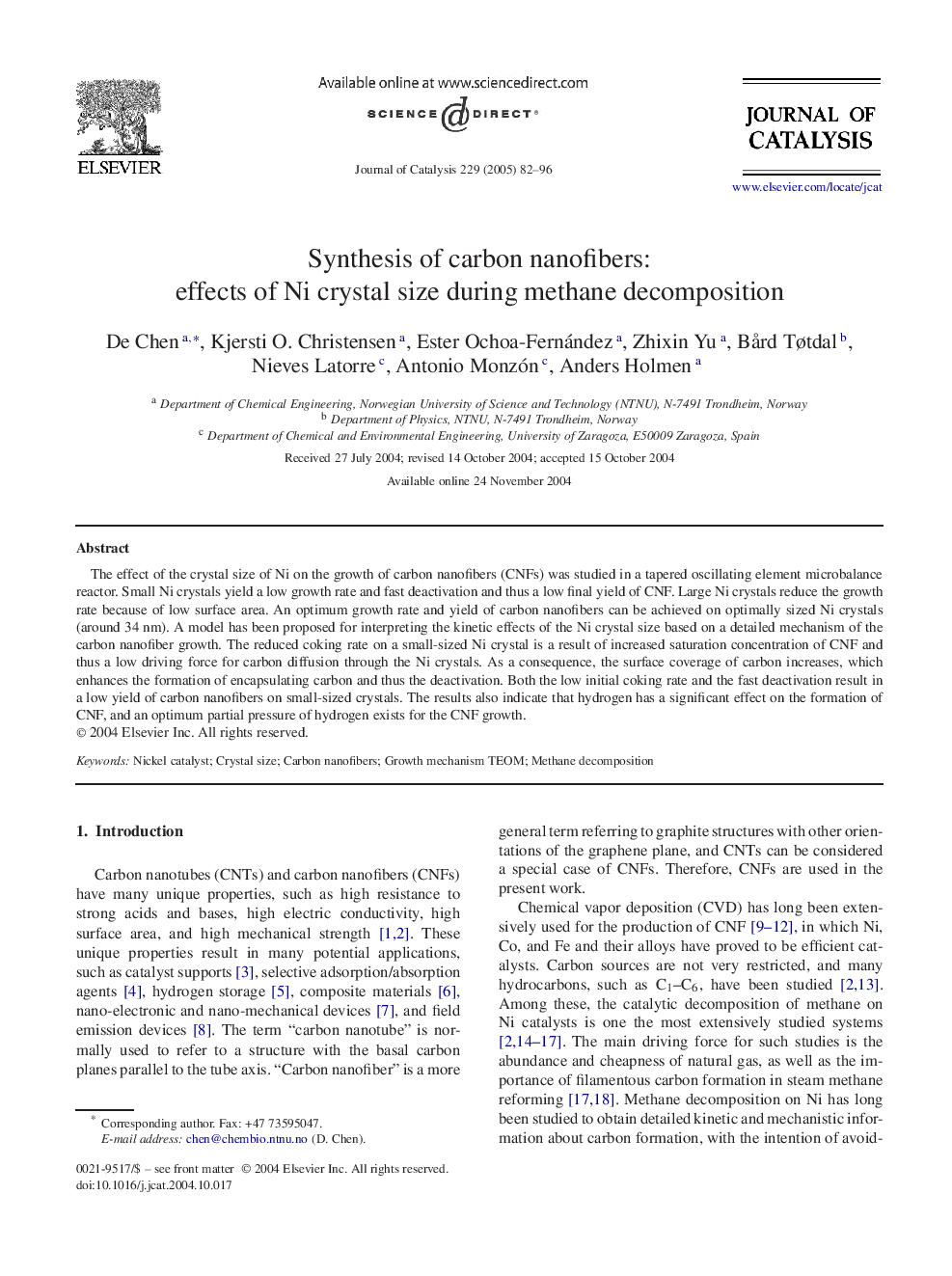| Article ID | Journal | Published Year | Pages | File Type |
|---|---|---|---|---|
| 10245107 | Journal of Catalysis | 2005 | 15 Pages |
Abstract
The effect of the crystal size of Ni on the growth of carbon nanofibers (CNFs) was studied in a tapered oscillating element microbalance reactor. Small Ni crystals yield a low growth rate and fast deactivation and thus a low final yield of CNF. Large Ni crystals reduce the growth rate because of low surface area. An optimum growth rate and yield of carbon nanofibers can be achieved on optimally sized Ni crystals (around 34 nm). A model has been proposed for interpreting the kinetic effects of the Ni crystal size based on a detailed mechanism of the carbon nanofiber growth. The reduced coking rate on a small-sized Ni crystal is a result of increased saturation concentration of CNF and thus a low driving force for carbon diffusion through the Ni crystals. As a consequence, the surface coverage of carbon increases, which enhances the formation of encapsulating carbon and thus the deactivation. Both the low initial coking rate and the fast deactivation result in a low yield of carbon nanofibers on small-sized crystals. The results also indicate that hydrogen has a significant effect on the formation of CNF, and an optimum partial pressure of hydrogen exists for the CNF growth.
Related Topics
Physical Sciences and Engineering
Chemical Engineering
Catalysis
Authors
De Chen, Kjersti O. Christensen, Ester Ochoa-Fernández, Zhixin Yu, BÃ¥rd Tøtdal, Nieves Latorre, Antonio Monzón, Anders Holmen,
